
All About Famous In bharatpurFairs and Festivals 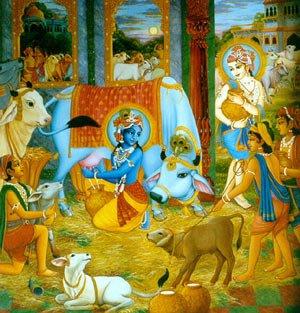 Festivals hold an unusual lure for the whole Rajasthanis, and they find any number of reasons to celebrate. While some of these are traditional festivals, there are also a large number that have been recently introduced by the tourism department to showcase the heritage of a region. Chances are, when travelling in the state, you will come across any number of local fairs and festivities in which you can participate. major and common festivals which are celebrated across the whole region are Holi, Diwali and Dussehra.
Rajasthan, bharatpur is part of that, infact a land of festivals and numerous fairs spread across the whole year. People live in festive mood stuggling with their routine hardship of the life.
Severel of fairs and festivals are related to their religious background. One of the most popular local fair ,called "Numaish"is held in the city near the time of "dashahra" A local festival.
All sections of the society participate in "Numaish"(Exhibition). Sellers from quite far placed come and exhibit their products to local people.
Festivals hold an unusual lure for the whole Rajasthanis, and they find any number of reasons to celebrate. While some of these are traditional festivals, there are also a large number that have been recently introduced by the tourism department to showcase the heritage of a region. Chances are, when travelling in the state, you will come across any number of local fairs and festivities in which you can participate. major and common festivals which are celebrated across the whole region are Holi, Diwali and Dussehra.
Rajasthan, bharatpur is part of that, infact a land of festivals and numerous fairs spread across the whole year. People live in festive mood stuggling with their routine hardship of the life.
Severel of fairs and festivals are related to their religious background. One of the most popular local fair ,called "Numaish"is held in the city near the time of "dashahra" A local festival.
All sections of the society participate in "Numaish"(Exhibition). Sellers from quite far placed come and exhibit their products to local people.
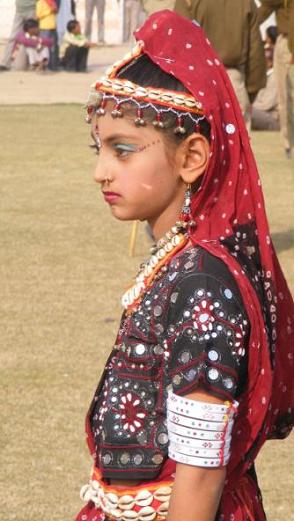 Brij Festival
Brij Festival Staged a few days before Holi (March) in the Brij area around bharatpur, it celebrates the festival of spring with spontaneous expressions of music and dance. Time: March Teej Fair 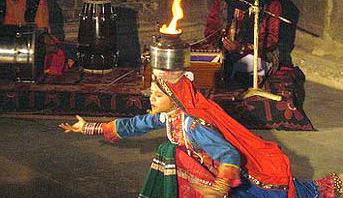 Teej is celebrated in the Hindu month of Shravan, corresponding with July-August every year and marks the advent of the monsoons, a time of joy and respite in Rajasthan. The festival is extremely popular with Rajasthani women. It is dedicated to goddess Parvati, the consort of Shiva. Married women dress up in all their bridal fineries, they apply henna on their palms and swing on flower-decorated swings as they sing traditional songs. They pray to goddess Parvati for the long lives of their husbands.
Teej is celebrated in the Hindu month of Shravan, corresponding with July-August every year and marks the advent of the monsoons, a time of joy and respite in Rajasthan. The festival is extremely popular with Rajasthani women. It is dedicated to goddess Parvati, the consort of Shiva. Married women dress up in all their bridal fineries, they apply henna on their palms and swing on flower-decorated swings as they sing traditional songs. They pray to goddess Parvati for the long lives of their husbands. Time : July - August Navratri 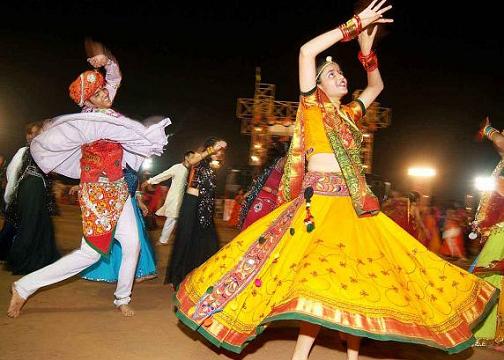 The nine days preceding Dussehra are marked by fasting, and one ritual meal a day. In the case of the martial Rajputs, a goat is sacrificed as food for consecration, and the worship of their weapons is obligatory. Usually in September-October, it is a private celebration with no public fanfare.
The nine days preceding Dussehra are marked by fasting, and one ritual meal a day. In the case of the martial Rajputs, a goat is sacrificed as food for consecration, and the worship of their weapons is obligatory. Usually in September-October, it is a private celebration with no public fanfare. Time: Sept - Oct Gangaur Festival 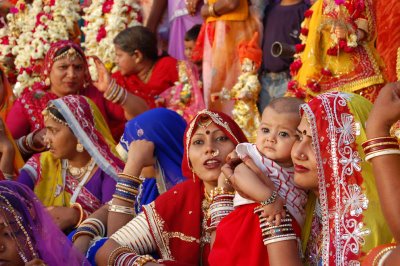 Gangaur is an 18-day festival celebrated by women all across Rajasthan. Married women pray for the long lives of their husbands while unmarried girls pray for a good match. The festival celebrates the love between Shiva and his consort Gauri or Parvati The festival commences on Holi. Women gather flowers and draw water from selected wells while chanting hymns in praise of the goddess. At the end of 18 days, the festivities culminate with the arrival of Lord Shiva to escort his wife back home. A grand procession, symbolic of a marriage procession, carries a beautifully decorated idol of Gauri in a gold and silver palanquin through the city. The procession includes elephants, camels, horses, dancers, drummers and joyous children.
Gangaur is an 18-day festival celebrated by women all across Rajasthan. Married women pray for the long lives of their husbands while unmarried girls pray for a good match. The festival celebrates the love between Shiva and his consort Gauri or Parvati The festival commences on Holi. Women gather flowers and draw water from selected wells while chanting hymns in praise of the goddess. At the end of 18 days, the festivities culminate with the arrival of Lord Shiva to escort his wife back home. A grand procession, symbolic of a marriage procession, carries a beautifully decorated idol of Gauri in a gold and silver palanquin through the city. The procession includes elephants, camels, horses, dancers, drummers and joyous children. Time: March-April 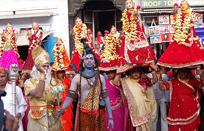 Sitla Mata Fair
Sitla Mata Fair A large fair is held to propitiate the goddess of war whose wrath can be the terrible scrouge of smallpox unless appeased by her followers. Consecrated food on this day consists of stale food left out the previous night. The fair is held in and around the temple dedicated to the goddess in Amber, Jaipur. bharatpur, Eastern Gateway of Rajasthan 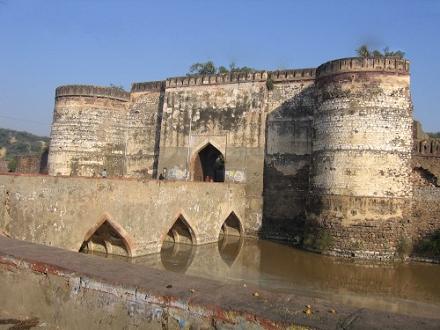 bharatpur, famous for Eastern gateway of Rajasthan, one of the tourist destinations of Rajasthan. Here you will find long list of tourist spots that recalls the memories of early 15th century. bharatpur is famous for bird sanctuary one of the well known in Asia for migrated birds.
bharatpur, famous for Eastern gateway of Rajasthan, one of the tourist destinations of Rajasthan. Here you will find long list of tourist spots that recalls the memories of early 15th century. bharatpur is famous for bird sanctuary one of the well known in Asia for migrated birds. Sight Seeing Near bharatpur Taj Mahal 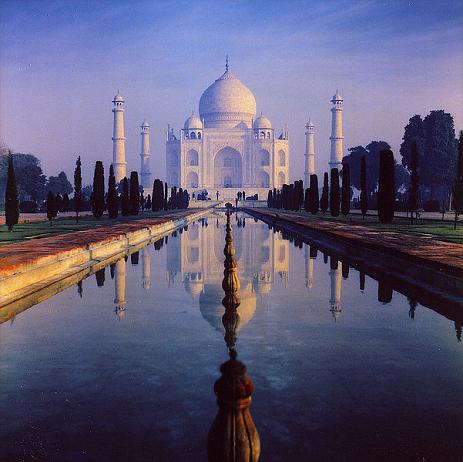 Agra is famous as being home to one of the seven wonders of the world- the Taj Mahal The architectural splendor of the mausoleums, the fort and the palaces is a vivid remainder of the mausoleums, the fort and the palaces is a vivid reminder of the capital in the 16th and early 17th centuries.
Agra is famous as being home to one of the seven wonders of the world- the Taj Mahal The architectural splendor of the mausoleums, the fort and the palaces is a vivid remainder of the mausoleums, the fort and the palaces is a vivid reminder of the capital in the 16th and early 17th centuries.
Agra Fort 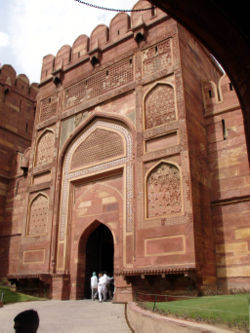 Agra Fort Built by the great Emperor Akbar in 1565 A.D. the fort Is a masterpiece of design and construction. Within the fort are a number of exquisite buildings, including the Moti Masjid, Diwane-E-Am, Diwani-E-Khaas and Musanman Burj, where the Emperor Shah Jahan died in imprisonment beside Jahangir's place, Khaas Mahal and the Sheesh Mahal.
Agra Fort Built by the great Emperor Akbar in 1565 A.D. the fort Is a masterpiece of design and construction. Within the fort are a number of exquisite buildings, including the Moti Masjid, Diwane-E-Am, Diwani-E-Khaas and Musanman Burj, where the Emperor Shah Jahan died in imprisonment beside Jahangir's place, Khaas Mahal and the Sheesh Mahal. Itmad - Ud - Daula 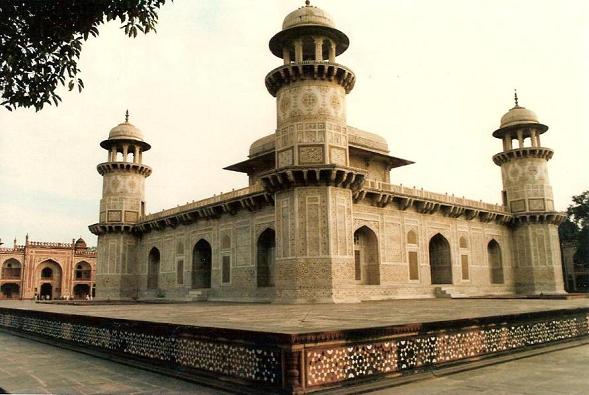 To the north of the fort and across the river yamuna are several fine examples of mughal architecture. The itmad -ud -daula was build by the empress Noor Jehan as a memorial to her father Mirza Ghiyas Beg, is beautifully ornamented with pietra dura inlay and lattice work marble screens.
To the north of the fort and across the river yamuna are several fine examples of mughal architecture. The itmad -ud -daula was build by the empress Noor Jehan as a memorial to her father Mirza Ghiyas Beg, is beautifully ornamented with pietra dura inlay and lattice work marble screens.
Chini Ka Rauza 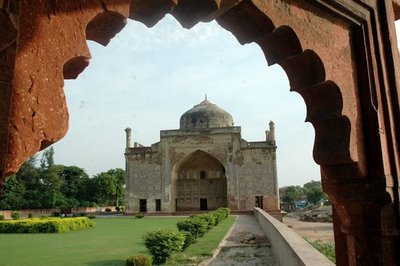 The tomb of Afzal khan, the persian poet and minister at Shah Jahan's court gets its name from the brightly coloured glazed tiles that decorate it, lies just 1km beyond itmad-ud-daula.
The tomb of Afzal khan, the persian poet and minister at Shah Jahan's court gets its name from the brightly coloured glazed tiles that decorate it, lies just 1km beyond itmad-ud-daula. 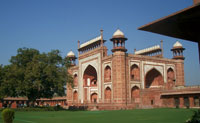 Sikandra Fort
Sikandra Fort 12km the tomb of Akbar, begun by the emperor himself and completed by his son, Jehangir. This richly decorated structure is a quaint mixture of styles. Radhaswamy Satsang, Dayalbagh This highly ornate memorial to the founder of the Radhaswamy satsang has been in the making for several years and is still being worked upon. It is entirely in marble, upon which every manner of ornamentation has been applied. Mathura Mathura the birthplace of lord Krishna is an important place of pilgrimage and thousands of devotees throng the city throughout the year. It lies at the heart that the young Krishna was nurtured. The little towns and hamlets in this area still alive with the tales of his mischievous pranks, his extraordinary exploits and still seem to echo with the sound of his flute. An ancient habitation, mathura's strategic location ensured its position as a center of trade and a meeting point of cultures, a major city during the time of the Buddha ( 5th century BC) it became the eastern capital of the Kushan emperor Kanishka,. Mathura continued to be a center of power during the enlightened rule of emperor Ashoka (3rd centre BC) and up to the Gupta era (4th century AD) . The arts flourished and at the Mathura museum one can trace the evolution of the Mathura school from the time of the Kushan emperors To the Gupta period. Today, Mathura with its many temples and splendid ghats along the river yamuna is a Bustling pilgrimage town. Lying midway in between Delhi and Agra , Mathura is easy to visit. Places in bharatpur Shri Krishna Janmasthan The splendid temple Katra Keshav Dev is built over the little prison cell believed to be the birthplace of lord Krishna. 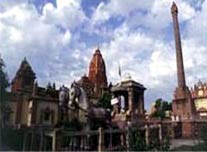 Gita Mandir
Gita Mandir A beautiful temple located on the Mathura Vrindavan road, has a fine image of lord Krishna. The Bhagwadgita is inscribed on the walls. Dwarakadhish Temple Mathura's most popular shrine was built in 1815 by Seth Gokuldas Parikh, treasurer or the state of Gwalior. Vishram Ghat A long line of picturesque ghats, steps leading to the water's edge , punctuated by arched gateways and temple spires, extend along the right bank of the river Yamuna. There are about 25 ghats of which the Vishram Ghat is the most important. It is here that lord Krishna is supposed to have rested after killing his wicked uncle Kansa, the ruler of Mathura The aarti at this ghat is a splendid sight, for hundreds of little oil lamps float out on the river at dusk as offering. Kans Qila This ruined fort on the banks of the river Yamuna was built by Raja Mansingh of Jaipur. An observatory was built here at a later sate by that keen astronomer Maharaja Sawai Jai Singh of Amer. Sati Burj The 17 m tall, 4 stored, red sandstone tower built in 1570 AD, commemorates the death of the widow of Raja Biharimal of Amer who committed sati. The Government Museum Housed in a fine octagonal building at damper park, the museum is a repository of sculpture styles, terracotta and artifacts from the Kushan and Gupta periods. Among its most impressive exhibits are the headless figure of emperor kanishka dressed in central Asian robes and boots and various Buddha images. Vrindavan Closely linked to Lord Krishna's youth and to stories of his playful pranks, Vrindavan is as important a place of pilgrimage as mathura. Today it is a temple town with ghats along the river and numerous shrines. PLACES TO SEE Deeg 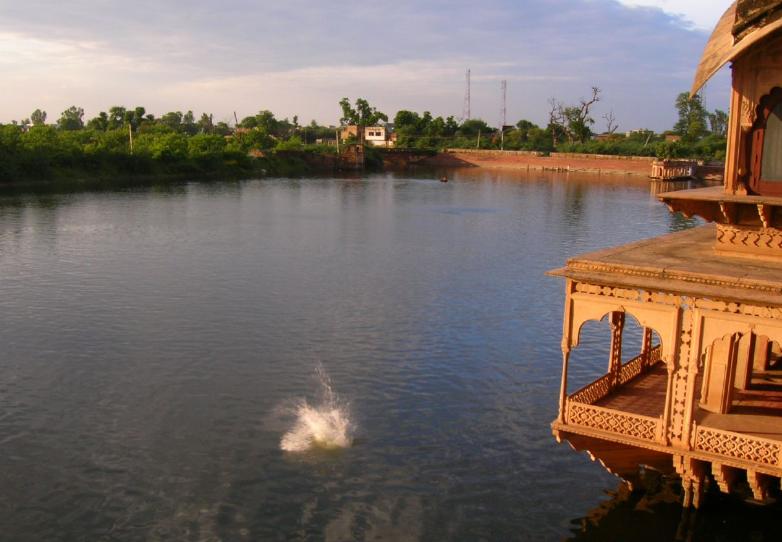 Deeg is a small town situated in the north Indian state of Rajasthan, around 152 km away from Delhi. Once the summer resort of the rulers of bharatpur, it served as the second capital of the region. This interesting town is strewn with massive fortifications, beautiful gardens, magnificent palaces, and a colorful bazaar.
Deeg is a small town situated in the north Indian state of Rajasthan, around 152 km away from Delhi. Once the summer resort of the rulers of bharatpur, it served as the second capital of the region. This interesting town is strewn with massive fortifications, beautiful gardens, magnificent palaces, and a colorful bazaar. Deeg is in the district of bharatpur. Approaching the town, one can see the battlements of the fort built by Surajmal. This was constructed in the form of a square, measuring about 274 m. The walls are about 20 m high and rise impressively, although the outer coating of plaster has peeled off in many places and shrubs grow from the bottom of the ramparts. The entrance to the fort is from the north. An outer gateway leads to an L-shaped bridge. Inside the fort is a palace (haveli). This is now in ruins, but one can still see what was once its entrance, an ornate red sandstone construction with a pointed arch. The forecourt was added later and for many years served as a prison. One can see a couple of canons on nearby mounts and, at the top of the northwestern battlement, known as Larkha Burj, another canon lies on its side discarded. It is from the top of the western wall of the fort that one may view the palace below, built beyond a pond-the Rup Sagar-and alongside the former Purana Mahal. The entrance is to the north. Known as the Singh Pol, it is ornately but simply carved with a couple of lions above the gateway. This building apparently dates from a later period, but was never finished. Once through it, one is at the edge of the gardens that are built in the char-bagh style, essentially four separate gardens around the same center. The style of both the gardens and buildings are from the Mughal period and yet with a distinctive flavor-a result of the Jats' own aesthetic vision that flourished at a time when the Mughal architecture started to deteriorate. The most striking feature is the fountains numbering about 500. One can see the bases of these sticking up all around the palace, but unless one visits on a Saturday in August, one is unlikely to see the water display operational for it requires a great amount of water. This builds up during the monsoon and is collected in a huge tank at the top of one building that can be seen almost directly opposite the entrance. It is from the tank that, when the sluices are open, the water flows down and out of the many fountainheads below. These can be seen all around the garden area. A full tank takes only a few hours to empty and about a week to fill. This was achieved by means of bullocks that brought up the water in leather buckets through special chutes at the side of the tower. The main building in the complex is the Gopal Bhawan, which was the actual residence of the Raja. Here one can see a spacious hall where the Raja was able to greet and address guests while upstairs were the Royal apartments. These can still be seen as they were when used; in one room, there is a raised elliptical dining table, while at the back there is a dining room in the western style. Temple in bharatpur Bageshowri Temple Bageshwari Temple Very old temple is in the ward no. two it is also believed to made before Muni Makunda sen and renovated by yogi Narhari Nath this temple is in the Devghat aria development district but the area of Bageshwri temple is effected by the bharatpur medical collage Mandir Shri Laxman Ji 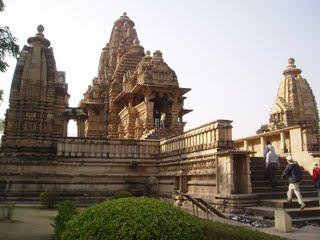 Location: bharatpur God Worshipped: Shri Laxman Ji and Urmila Ji
Location: bharatpur God Worshipped: Shri Laxman Ji and Urmila Ji District: bharatpur Road Distance from Jaipur: 180 Kms Built in the year: 1870 AD Nearest Airport: Agra (60 kms) By bharatpur Naresh Balwant Singh Nearest Rly. Station: bharatpur (2 kms) The king, it is said, came into the close contract of a sage called Shri Sant dass. Those were the last days of the kings rule. This sage Sant Dass was the great devotee of Laxmanji and always remained dedicated to him. It is said that soon after the foundation of the temple was laid Maharaja Baldev Singh who had in fact founded it, declared his son Balwant Singh as his successor king. Thus Maharaja Balwant Singh in his rule got the temple constructed. The idols were enshrined in the Vikram Samvat 1947 (1890 A.D.). The Laxmanji temple of Deeg according to its pujari Pandit Murari Lal Prashar, is older than this temple and the royal family of bharatpur regards both the Laxmanji temples as their royal temples Ganga Temple in bharatpur 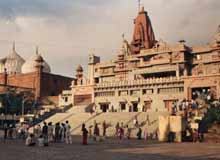 A masterpiece of architecture, Ganga Temple in bharatpur is truly the most beautiful among all the temples in the city. The temple is conveniently situated in the heart of bharatpur city and is home to a striking idol of goddess Ganga. A large number of devotees from all over the country visit the Ganga Temple in bharatpur with an unwavering faith that all their unmet desires would be fulfilled. The temple also attracts visitors to its splendid architecture that is sure to leave you awestruck.
A masterpiece of architecture, Ganga Temple in bharatpur is truly the most beautiful among all the temples in the city. The temple is conveniently situated in the heart of bharatpur city and is home to a striking idol of goddess Ganga. A large number of devotees from all over the country visit the Ganga Temple in bharatpur with an unwavering faith that all their unmet desires would be fulfilled. The temple also attracts visitors to its splendid architecture that is sure to leave you awestruck.Ganga Temple in bharatpur was built by Maharaja Balwant Singh, the ruler of bharatpur. It is said that the king who had no child for several years pleaded to goddess Ganga to fulfill his desire and even promised to get a temple constructed in her name if he was blessed with a son. As the legend goes, the goddess granted his wish and the king ordered the construction of the temple in 1845 that took nearly 91 years to complete! History suggests that the idol of goddess Ganga was finally placed in the temple, which was then named after her, by Brijendra Singh who was the fifth descendant of Balwant Singh. Besides a striking idol of the goddess, Ganga Temple in bharatpur also houses a huge dummy of a crocodile that is said to be the divine carrier of the goddess. The devotees at the temple are offered the holy water from River Ganga that is especially brought from Haridwar each year and kept in a huge silver pot near the feet of the goddess. It is believed that after the water receives the divine blessings of goddess Ganga, it is distributed to the visitors in the form of prasad. A perfect blend of Rajputana, Mughal and South Indian styles of architecture, Ganga Temple in bharatpur displays exquisite carvings on its walls and pillars that are worth a sight. Banke Bihari Temple in bharatpur 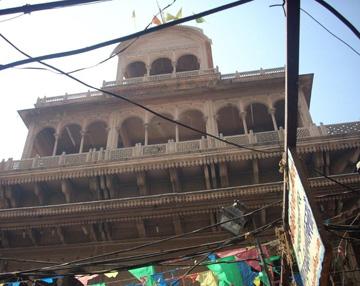 Very few people are aware that the city of bharatpur that is known around the world for its bird sanctuary also has a number of temples that are a beautiful work of art. Known for their architecture, these temples see a large number of devotees from all across the nation. Banke Bihari temple in bharatpur is another such temple that is always crowded with hundreds of devotees.
Very few people are aware that the city of bharatpur that is known around the world for its bird sanctuary also has a number of temples that are a beautiful work of art. Known for their architecture, these temples see a large number of devotees from all across the nation. Banke Bihari temple in bharatpur is another such temple that is always crowded with hundreds of devotees.Nestled in the center of the city, this temple is established on a vast expanse of land. Inspired by Brij architecture, this temple has a beautiful building. The main hall of the temple has striking statues of Lord Krishna and is perpetual companion Radha. Amazing pictures depicting the childhood of Lord Krishna are shown on the walls of the verandah outside the main hall. Wonderful paintings of various deities have been beautifully painted on the walls and ceilings of the temple. Hundreds of devotees gather at the temple premises to be a part of the morning and evening aarti that is a major attraction at the temple. The idols of the lords are dressed up beautifully before the aarti and are unveiled once the statues are decorated from head to toe with beautiful jewels and clothes. A large number of followers wait outside at the verandah to get a glimpse of the lord. |

